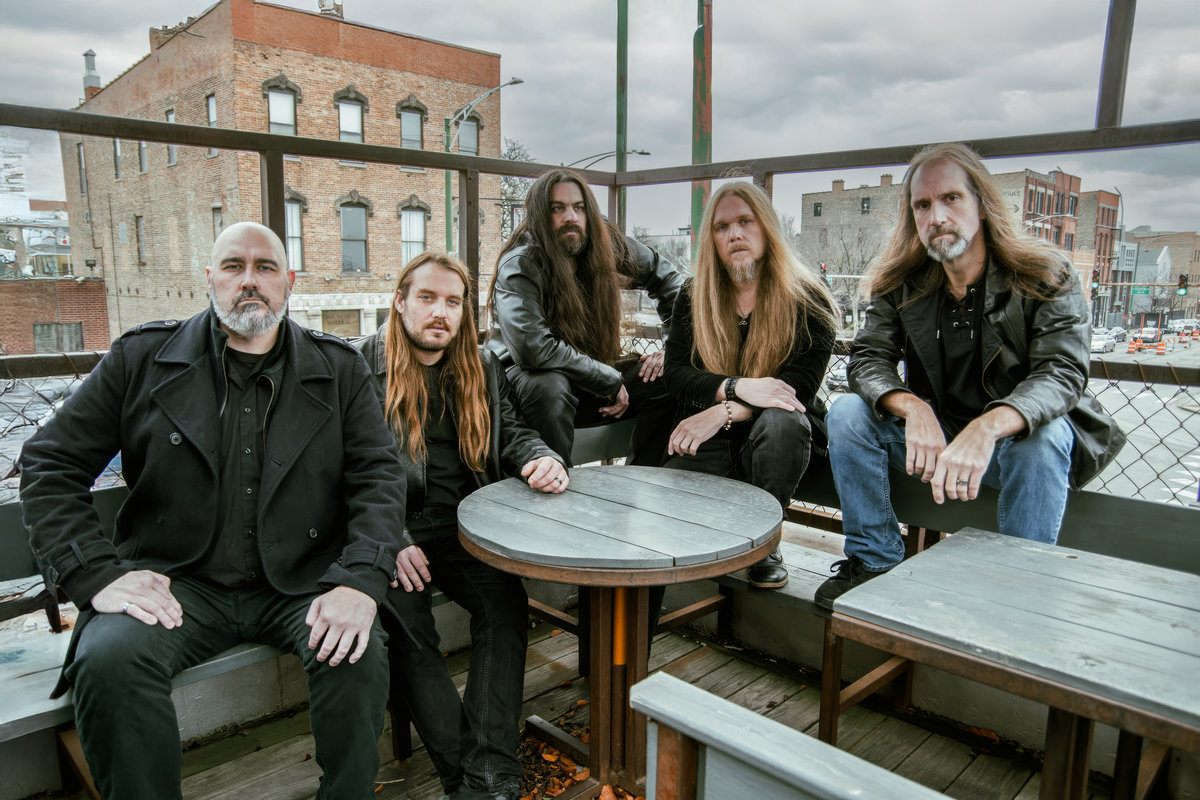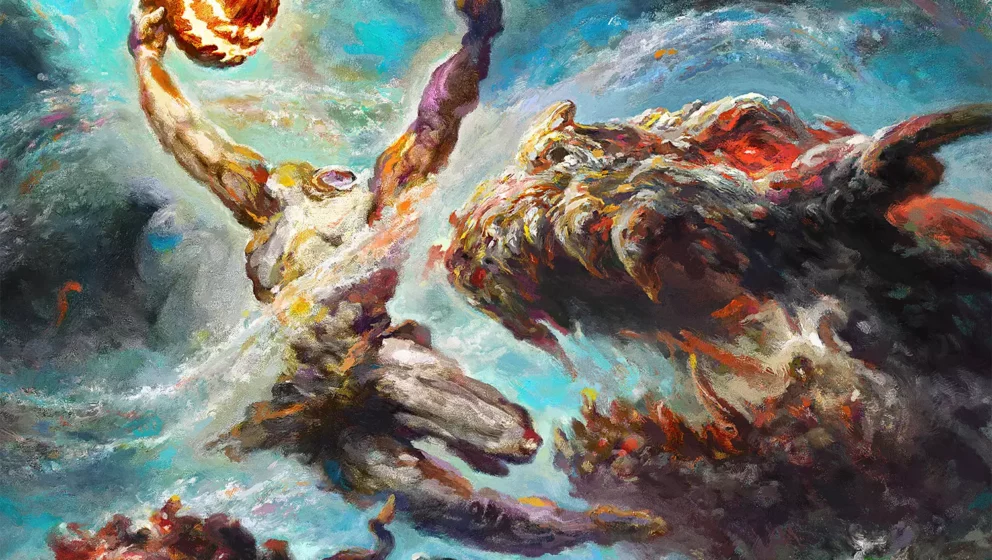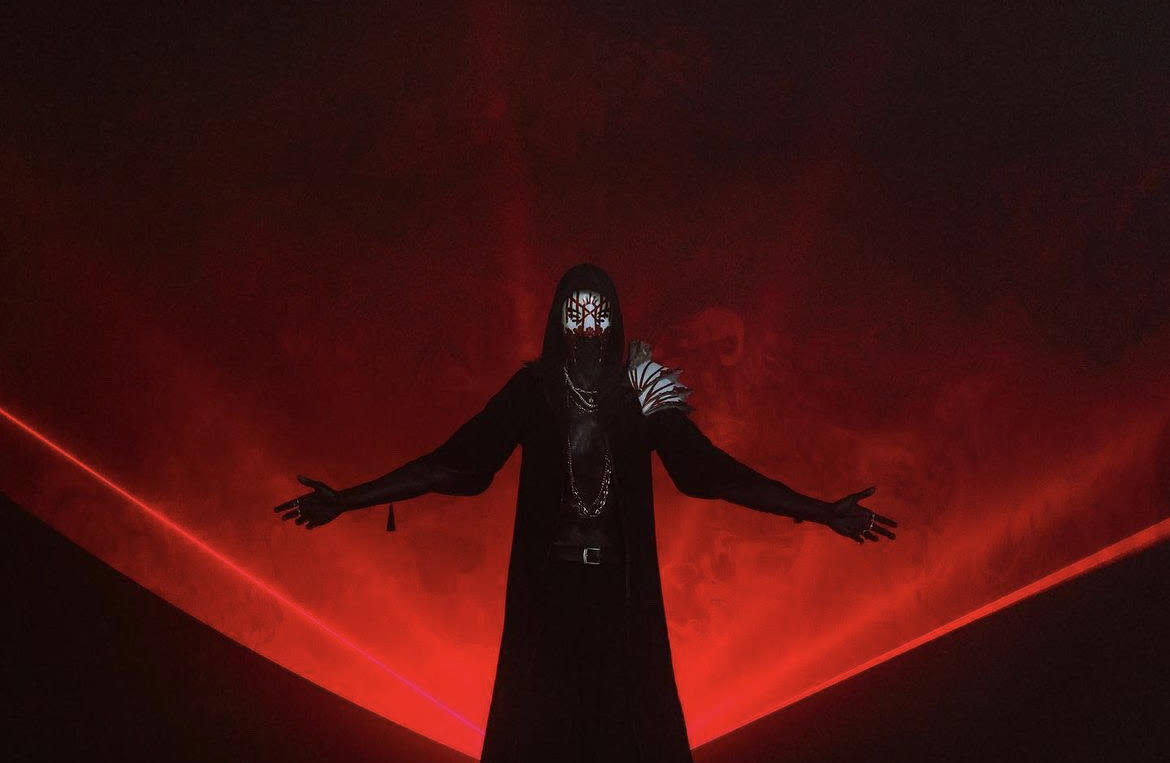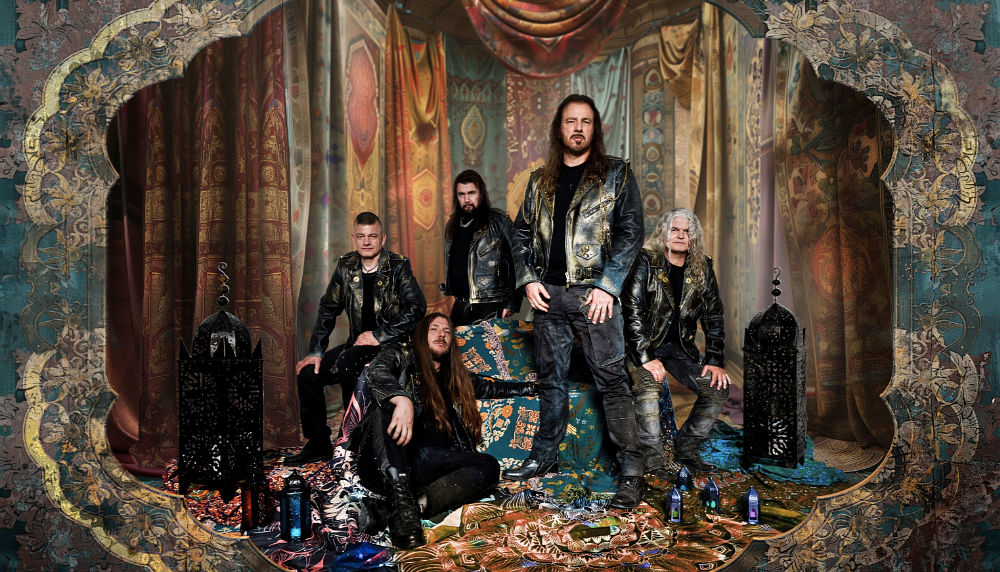So in typical Metal Pigeon fashion, I’ve fallen behind on things I planned to publish, a result of my getting distracted by one notion after another and stopping work on one piece to begin work on another, and subsequently stopping again, yada yada yada. Recently I got set upon a topic that requires a bit more thought and dare I suggest, research, and its taken up all of the free time I allocate to the blog. So while that’s happening, I thought I’d do a quick piece rapidly covering all the new and noteworthy albums that have come out in the past few weeks and months that deserve commenting upon. I imagine that this is going to be the only one of its kind before we stumble into December and I’m scrambling to write up my year end songs and albums lists, so there’s probably going to be things coming out soon (the new Aephanaemer, Omnium Gatherum, and Blut Aus Nord albums) that will not get covered here because I don’t have promos for them. Its fine though, because I’m already drowning in a sea of new music and this is my attempt at coming up for air.

Lets talk about positive stuff first — the albums that really impressed me and that are in a consistent (if not constant) rotation for me since their release. Going to single out the new November’s Doom album Major Arcana here, because damn it all if this isn’t one of their best albums to date. And its always hard to judge Novembers Doom albums as a whole in relation to their catalog, because this is a band that simply does not make bad records. There are albums that don’t resonate or hit as hard as another, and certainly there are albums in their catalog that tower above all the others (Pale Haunt Departure for most, Hamartia for me), but Novembers Doom have been one of the most consistent bands in metal for a very long time now. The new album has one of the year’s best songs right out of the gate in the title track, a ferocious yet forcefully melodic epic that has a masterful performance from vocalist Paul Kuhr. Alongside the crushing “The Fool”, this is as unrelentingly heavy as Novembers Doom has sounded in recent memory, but their ability to showcase dynamic range and light and shade hasn’t diminished, as they illustrate throughout the album. I admit that I have been paying more attention to this album than others in part because we interviewed guitarist Larry Roberts for the MSRcast and Paul Kuhr on Metal Geeks, but the thing is, long after those were recorded, Major Arcana stuck around and has resurfaced as a craving that I have to hit play on to satiate.

In more rapid fire fashion, we just played these guys on the recent episode of the podcast but Manegarm’s new album Edsvuren is yet another in a string of incredibly strong albums from these folk metal veterans. Vibrantly energetic and confident, this is the sound of a band that understands its sound so perfectly that they’re able to experiment and broaden their range within those boundaries without ever sounding like they’re trying to be something they’re not. At times intense and blistering, and others beautifully serene and harmonious, this is everything that I think a lot of viking imagery based bands wish they could sound like but lack the musical identity to accomplish. If you’ll recall, this band’s last two albums have made my year end best albums lists in 2019 and 2022, and without spoiling things, its highly likely they’re going to find themselves there again in 2025. Similarly, the new Vintersorg album Vattenkrafternas Spel continues to astound a month now into listening to it, and it conjures up feelings of both nostalgic wistfulness and just real, raw excitement that the old master himself still has that magic whatever it is that defines his sound. With a sound that is uniquely his own, there is no real comparison one can make to any other folk artist except maybe with someone as idiosyncratic as Myrkur or Saor who have such distinct musical identities that make their music unmistakable. In some ways he is continuing where he left off from 2017’s Till fjälls del II, albeit with songwriting that feels more streamlined and flowing, less progressive in its overall structure. Opinions vary on Vintersorg’s more proggy albums, and I actually love his most progressive offering in The Focusing Blur, but I adore when he just lets the folkiness take over his sound and steer him to those Otyg roots as he’s doing here.

I’m also uncertain if I mentioned this on the blog, but a few months ago I traveled up to Austin to see German pagan folk artists Faun in a small, intimate venue called Come and Take It Live (its more charming than its name suggests). It was their first time in Texas, and it was a magical gig, definitely different from a metal show (they don’t have electric guitars in this band for starters) as they wielded a variety of instruments that I’ve rarely or never gotten to see performed live (such as the plethora of strange percussion hand instruments that I couldn’t even begin to describe). They were effortlessly charming on stage and they took a budding, curious casual fan in me into a die hard who sacked their merch table for two t-shirts and a hoodie I’m eagerly awaiting colder weather to wriggle into, but their new album wasn’t available until two months later. Those months elapsed, and I’ve been digging into said new album HEX quite a bit, itself much darker and experimental than some of their more major key adorned cheerful tunes that have the higher play counts on Spotify. My go to recommendation for anyone new to this band is to check out their pro-shot live show at Hellfest 2023, because seeing them live is an experience and that setlist is a perfect introduction to their catalog and vibe in general. Then if you enjoyed that, give HEX a shot with a fair warning that although it has catchy moments within, its a more mood driven affair, but one that is captivating to me for what its worth.

Okay, moving onto murkier territory… I don’t think there was anything I outright disliked that came out recently, but certainly there is stuff that I have mixed feelings about. Lets talk about the big one first, the new Amorphis album Borderland, which despite its refreshingly crushing and demonstrative lead single “Bones”, might be a contender for the biggest disappointment of the year, if not for the glum reality that I’m not entirely surprised by this outcome. With the exception of that truly fine single, this is a step down from 2022’s Halo, which itself was plagued with unevenness, but Borderland is mired in a mid-tempo morass that feels like a chore to slog through at times. There’s some moments that pop here, “Fog to Fog” has a evocative melody and strong hook working for it, and Esa Holpainen’s guitar work on “The Lantern” stands out as a highlight, but this is not enough. The band switched producers here to Jacob Hansen after many albums with Jens Bogren at the helm, and I’ll be damned if nothing sounds different with the change, but the notion of changing producers all of a sudden perhaps hints at the band knowing that they had to shake something up. So it should alarm them and critical fans as well that the band sounds like they’re spinning their wheels, and maybe its because keyboardist Santeri Kallio has written the majority of the songs here — all of which are of course keyboard melody forward and relatively similar in pacing and tone.
Pick a song from Borderlands at random and it sounds fine, sometimes catchy or otherwise pleasant enough, but string them together as a full length album and this is an exhausting, unmemorable listen. And look, I’m not suggesting a vocalist change or a member change, these guys are all longtime members and this is still a damn good band, but the last time they touched greatness was a decade ago with Under the Red Cloud. They need a shakeup, and if a producer change won’t do it, they might consider looking inwards at their own creative process and jolt their own sound with sharp turns towards pure aggression or even pure clean vocals (close to what Swallow the Sun did with Shining last year). Tomi’s harsh vocals just don’t hit as hard as they should across an entire album, and the back and forth growl/clean switching feels like its on autopilot at the moment. Maybe Esa takes over songwriting for the next one, pushing the band into a more riff centric direction and we scale back the keyboards (so much of the sameness comes from Santeri’s keyboard arrangements sounding very similar song to song). I’ve found myself going back to older albums whenever I want to hear this band, because their current sound has worn thin. What a drag to have to write negatively about this band’s new albums three times in a row now, but its where I’m at.

Pivoting to Battle Beast and their newest, Steelbound, which like its title suggests is a bit of a shift towards a more classic heavy metal approach away from the strong ABBA vibes of their previous album Circus of Doom. I dunno what the consensus was on that prior album, but I loved it because it pushed vocalist Noora Louhimo to the forefront of the songs and really made her incredible emotive range the centerpiece of its songwriting. On Steelbound, the songs that really work are not coincidentally the ones that stay faithful to this tried and true method, and on tunes where the band amps up the attack to force Louhimo to start belting like she’s Doro, the hooks seem less impactful, her vocal delivery less compelling. This is a good album, but this uneven refusal to commit to their strengths fully prevent it from reaching the lofty heights of Circus of Doom, nor even the Roxette steeped spunkiness of their 2019 album No More Hollywood Endings. Maybe the criticism of those albums from fans got the band thinking it was time to lean back to metal, but to me anyway, that’s not their strong suit, and that should be okay. You have a really compelling vocalist who flourishes on expressive melodies and soaring deliveries, let her cook and step out of the way with the riffage. Heavier is not always better, this is a built-in tendency of metal having so many flavors (subgenres), because what works for thrash metal or death metal doesn’t necessarily make a glam or power metal song better.

The other contender for biggest disappointment of the year is the new Sabaton album, Legends, which feels like a compilation album of b-sides that they’ve gathered up from various writing sessions and polished off to pack onto this aimless release. It’s a lackluster follow-up to their two World War I themed albums which really did feel fresh and inspired, particularly The Great War with its bleaker, darker tone reflected in the grinding, doomy approach of some of the songs. The follow-up The War to End All Wars was slightly less compelling, but contained the sterling single “Christmas Truce” which even the most curmudgeonly Sabaton critic should have been able to admit was a great song. But on Legends, it really does feel like some of these ideas have been recycled in a less obvious fashion, or that the band is taking the synth+vocal melody blueprint too far, as on the bumbling “Hordes of Khan”, in contention for the worst Sabaton song ever. Similarly “I, Emperor” is an aimless, paint-by-numbers dud that should be far greater given its subject matter (Napoleon Bonaparte), and I can’t imagine how pissed off Vlad the Impaler would be if he heard “Impaler”…such a tepid paean to one of history’s more horrifying figures. There’s bright spots here amidst the gloom, “Crossing the Rubicon” has a cracking chorus drop reminiscent of the best stuff off The Art of War, and “A Tiger Among Dragons” has an interestingly structured chorus, and “Maid of Steel” brings back that old Metalizer vibe that we’ve heard so little of in recent years. But damn does this album sound tired, and I expect better songwriting from Joakim Broden. This is a band that needs an inspiring concept to sound inspiring, and Legends wasn’t it.

















